Recent Storm Damage Posts
How to Handle Electrical Hazards During and After Storms
9/6/2024 (Permalink)
 If you need professional help with storm damage restoration in Naples, FL, contact SERVPRO of East Naples today.
If you need professional help with storm damage restoration in Naples, FL, contact SERVPRO of East Naples today.
Living in Naples, FL, we are familiar with the intense storms that can sweep through, bringing significant electrical hazards. Knowing how to stay safe during and after these storms is crucial. Here’s a guide on electrical safety, focusing on practical steps and essential tips that can help protect you, your family, and your home.
During the Storm: Staying Safe Indoors
Storms can bring about significant electrical hazards, making it essential to follow safety measures to protect your household.
Avoid Using Electrical Appliances
When a storm is raging outside, it's important to minimize the use of electrical devices to stay safe. Lightning can cause power surges that might damage electronics or cause fires. Unplugging unnecessary appliances and avoiding the use of corded phones during a storm is crucial.
After the Storm: Assessing and Addressing Electrical Hazards
After a storm has passed, it's crucial to carefully inspect your home and address any potential electrical hazards before returning to normal activities.
Inspect for Electrical Damage
After the storm has passed, it’s essential to inspect your home for any electrical damage before turning the power back on. Carefully look for frayed wires, burnt smells, or sparks. If you suspect any damage, it’s safest to call a professional electrician to assess the situation.
Beware of Flooded Areas
Floodwaters pose significant electrical hazards, and it's vital to approach these areas with caution. According to the CDC, it is advised never to enter flooded areas if the power is still on, as standing water may be electrically charged. This can prevent accidental shocks and ensure your safety.
Use Generators Safely
If you’re using a generator during a power outage, it must be used safely to prevent further hazards. The CPSC recommends placing generators outside and at least 20 feet away from windows, doors, and vents to avoid carbon monoxide poisoning.
Replace Damaged Electrical Equipment
It's crucial to address any electrical equipment exposed to water during the storm. If any electrical appliances or devices are exposed to water, they should be replaced or inspected by a professional. Using water-damaged electrical equipment can lead to short circuits and fires, so it’s best to err on the side of caution.
Contact Your Utility Company
In the event of downed power lines or other electrical issues, it's important to contact your local utility company immediately. Do not attempt to fix these issues yourself, as they can be extremely dangerous. Always prioritize safety and let professionals handle these serious hazards.
Preventive Measures for Future Storms
Taking preventive measures can help protect your home and electrical systems from future storms.
Install Surge Protectors
To protect your electronics from power surges caused by lightning strikes, consider installing surge protectors. Whole-house surge protectors can safeguard all electrical appliances in your home, providing a comprehensive defense against electrical damage.
Regular Maintenance
Regularly maintaining your home’s electrical system is key to preventing future hazards. Check for frayed wires, ensure outlets are not overloaded, and make sure your circuit breaker is functioning correctly. This routine upkeep can help prevent potential issues during storms.
Create an Emergency Kit
Being prepared is the best defense against storm-related hazards. An emergency kit with battery-operated flashlights, radios, spare batteries, and other essential items ensures you are prepared to stay safe and informed during and after a storm. This preparation can make a significant difference in an emergency.
Protecting Your Home and Family
Electrical safety during and after storms is crucial to prevent accidents and ensure your home is secure. Following these guidelines protects yourself, your family, and your property from electrical hazards. If you need professional help with storm damage restoration in Naples, FL, contact SERVPRO of East Naples today. Our team is ready to help with all your emergency storm damage cleanup needs!
The Aftermath of Storm Flood Damage: Navigating the Path to Recovery
1/3/2024 (Permalink)
Storms and flooding can wreak havoc on homes and communities, leaving behind a trail of destruction and a long road to recovery. The aftermath of storm flood damage can be overwhelming, both emotionally and physically. Understanding the steps to take in the aftermath of a flood is crucial for homeowners to navigate the path to recovery effectively. In this blog, we will explore the key considerations and steps to take when dealing with the aftermath of storm flood damage.
Ensure Safety
First and foremost, prioritize your safety and the safety of your family. Before entering your home after a flood, wait for authorities to deem it safe. Be cautious of electrical hazards, structural damage, and contaminated water in your property.
Document the Damage
- Take photos and videos of the flood damage to your property, both inside and outside.
- This documentation will be essential for insurance claims and assistance applications.
Contact Your Insurance Provider
- Notify your insurance provider about the flood damage as soon as possible.
- Understand your policy coverage details and file a claim promptly.
- Provide the documentation you gathered as evidence of the damage.
Begin the Cleanup Process
- Remove any standing water from your property using pumps or wet-vacs.
- Use fans and dehumidifiers to dry out the affected areas as quickly as possible.
- Remove damaged furniture, carpets, and other belongings to prevent further mold growth.
Engage Professional Help
Consider hiring a professional restoration company with experience in flood damage cleanup. These professionals have the expertise, equipment, and knowledge to thoroughly restore your property. Mold can start to grow within 24-48 hours after a flood. Thoroughly clean and disinfect surfaces and employ proper drying techniques to prevent mold growth. Consider using mold inhibitors or hiring a mold remediation specialist if necessary. Stay updated with local authorities regarding disaster assistance programs and resources available. Check if you qualify for any government assistance programs to aid in your recovery.
Take Steps to Prevent Future Flood Damage
Implement flood-resistant modifications to your property, such as elevating electrical outlets and appliances, installing flood-resistant barriers, or redirecting water flow away from your home.
Consider purchasing flood insurance if you live in an area prone to flooding. The aftermath of storm flood damage can be emotionally challenging. Seek support from family, friends, or professional counselors to help cope with the emotional toll.
Dealing with the aftermath of storm flood damage requires patience, resilience, and practical steps towards recovery. Prioritize your safety, document the damage, contact your insurance provider, and engage professional help for a thorough cleanup. Mitigate mold growth, address electrical and HVAC systems, and explore available disaster assistance programs. Take proactive measures to prevent future flood damage and seek emotional support during this challenging time. With a comprehensive and organized approach, homeowners can navigate the path to recovery and restore their homes to their former glory.
Cracks in the Foundation: How Storm Damage Can Impact Your Home's Structural Stability
9/28/2023 (Permalink)
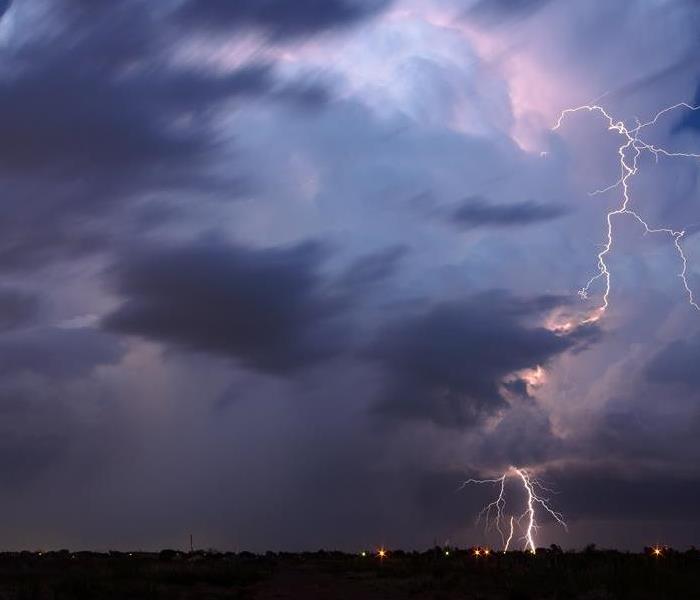 Storms can leave behind foundation problems.
Storms can leave behind foundation problems.
Storms can bring significant damage to various parts of your home, including the foundation. While the focus is often on visible damage such as roof leaks and fallen trees, it's crucial to recognize the potential impact on your home's foundation. Understanding how storm damage can affect your foundation is essential for early detection and necessary repairs. In this blog post, we will explore the risks associated with storm damage and its effects on your home's foundation.
Soil Saturation
Heavy rainfall during storms can saturate the soil surrounding your foundation. When the soil becomes overly saturated, it expands and exerts pressure on the foundation walls. This pressure, known as hydrostatic pressure, can lead to cracks, bowing, or leaning walls. It's important to address any signs of foundation movement promptly to prevent further structural damage to your home.
Intense storms can cause erosion and soil shifting around your foundation. As rainwater rushes and flows, it can wash away soil from around the foundation, creating voids or gaps. These empty spaces weaken the foundation's support, potentially leading to settlement and uneven settling of your home. The shifting soil can also cause foundation cracks and compromises its stability.
Foundation Heaving
In regions where freezing temperatures occur during storms, foundation heaving can become a concern. When moisture in the soil freezes and expands, it exerts upward pressure on the foundation. This pressure can cause the foundation to rise or heave unevenly, leading to cracks and structural instability.
Storms can result in water infiltration into your home through foundation cracks, basement windows, or compromised waterproofing systems. If left unchecked, this water intrusion can cause extensive damage, including moisture-related issues such as mold growth, rot, and deterioration of building materials. Regularly inspecting your foundation for cracks and addressing any waterproofing concerns can help protect your home from water damage.
Compromised Drainage Systems
Storms can overwhelm your home's exterior drainage systems, such as gutters, downspouts, and perimeter drains. Improper drainage or clogged systems can lead to water pooling near the foundation. The prolonged presence of water can weaken the soil and contribute to foundation problems over time. Maintaining and ensuring the proper functioning of your drainage systems is essential to mitigate potential risks.
Tree Damage
Trees near your home can present a significant risk during storms. Strong winds can cause trees or large branches to fall onto your home, damaging the foundation and other structural components. Tree roots can also extend beneath your foundation, potentially causing damage and destabilizing the structure. Regular tree maintenance, including trimming and removal of hazardous trees, can help reduce the risk of foundation damage.
Understanding the potential impact of storm damage on your home's foundation is crucial for protecting your property's structural integrity. From soil saturation and erosion to foundation heaving and water infiltration, storms can pose various risks. Regular inspections, prompt repairs, and proactive maintenance are key to identifying and addressing foundation issues early on. By taking the necessary precautions and seeking professional assistance when needed, you can protect your home's foundation and ensure its long-term stability.
What To Do Right After a Storm Damages Your Home
8/10/2022 (Permalink)
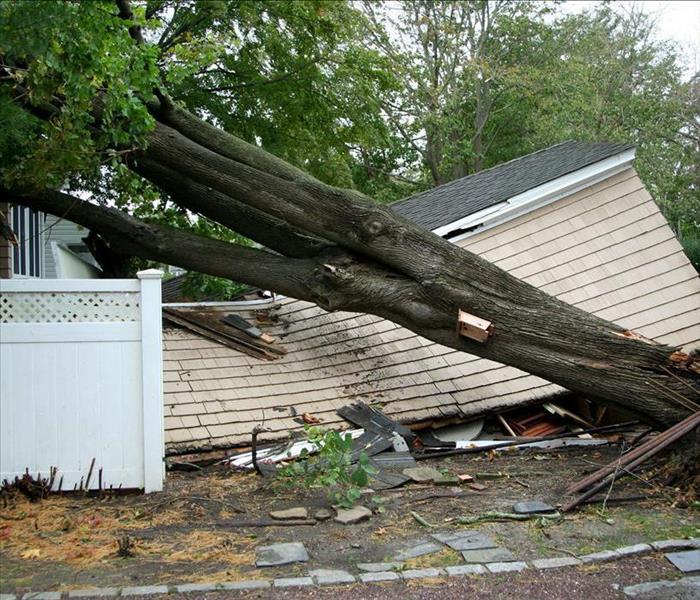 Storm damaged a home in Quail Creek, FL.
Storm damaged a home in Quail Creek, FL.
What to Do After Your House Is Damaged by a Storm
You hear the wind blowing and the rain pounding on your window panes, and you hope your home in Quail Creek, FL, will remain untouched by the storm. Unfortunately, this is not the case. A tree falls on your roof, and water pours into your home, soaking your carpets and covering your hardwood floors. Here's how to stem the tide of storm damage in the event's immediate aftermath.
1. Document Damage Before Attempting Immediate Repairs
If you are planning to submit a claim to your insurance company for the damages, you will want to record them prior to attempting any immediate repairs. Make a list of damaged items, and take photos or video of each.
2. Make Immediate Repairs Only To Prevent Further Damage to Your Home
Take the following steps when attempting immediate repairs or cleanup:
- Cover leaking roofs with a tarp to prevent more rainfall from entering the home.
- Pull up wet carpet to prevent mold and move it to a dry location.
- Throw away all perishable food that has spoiled.
Make sure all articles being removed from the home were documented on the inventory list of damaged items.
3. Exercise Caution If You're Staying in a Damaged Home
To restore lost electricity in your home, use generators outside, away from windows and doors. Make sure your sewer system is working before flushing toilets, using water stored previously for this function if necessary. Open windows and run fans inside your home to circulate air and aid the drying process.
You may also choose to contact a company that can perform emergency restoration services in your home. If so, keep receipts for services provided, as well as for any purchases made for immediate repairs, such as a tarp for the leaking roof.
Hopefully, your home will never be subjected to storm damage. If it is, however, these storm tips can get you started on the road to recovery and get your life back to normal as quickly as possible.
Post-Flood Tips
7/19/2022 (Permalink)
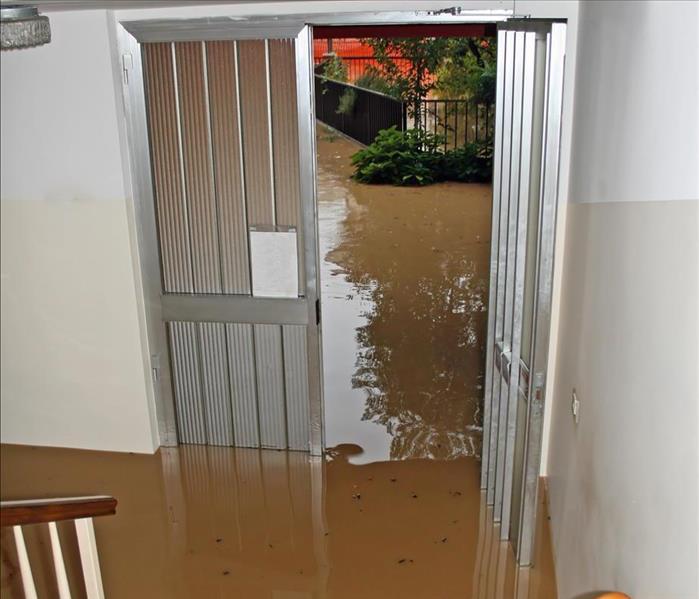 Flood damage in a home in Island Walk, FL.
Flood damage in a home in Island Walk, FL.
Steps To Take After a Storm
Are you stuck with a home that is completely engulfed in flood water? There are certain actions that are necessary to take in order for you to protect your property. Here are three important steps you need to take after the storm to protect your best interests.
1. Tell your mortgage lender immediately. Not only will you most likely be able to waive any late fees on your bill - you may even be able to defer payments if your area has suffered from an extreme weather-related tragedy. That is why it is important to take this step before any other.
2. Call your homeowner’s insurance company. The earlier you file a claim, the more likely it is that you will have it quickly approved. Just be prepared to record any water damage and related repairs for their records as well as your own. An insurance adjuster may need to inspect the property, as well, so be prepared for his or her arrival.
3. Find a trusted, professional cleanup company. It is never safe or very effective to clean and repair your home yourself after the flood water has left its effects, so you need to find the best local Island Walk, FL, residential storm damage service to help you create a thorough cleanup plan that gives you the best chance of restoring your property.
Above all else, make sure that you keep yourself and your family safe after a storm. A flooded home can cause contaminated standing water, electrical dangers and other hazards that you need to be aware of. In some cases, it is best to avoid your property at all costs until local authorities give the all-clear. Once everything has settled down at and around your house, a professional cleanup team can help you figure out how to deal with flood water and its related damage so you and your loved ones can be safe and happy in your home once more.
3 Steps To Repair a Roof After Storm Damage
7/11/2022 (Permalink)
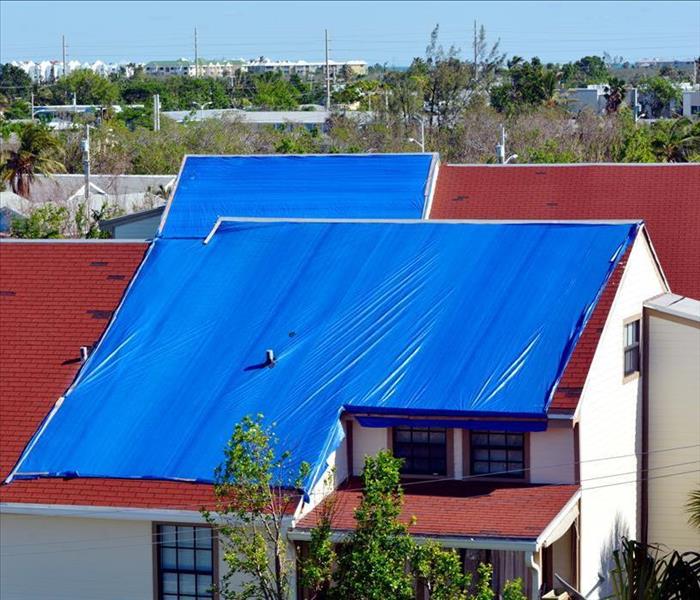 Tarping your roof will help you prevent the roof from deteriorating.
Tarping your roof will help you prevent the roof from deteriorating.
What Happens During Roof Repair?
When storms in Vineyards, FL, damage your home’s roof, the idea of a roof repair can seem overwhelming. However, understanding what repairing a roof entails may make you feel more at ease about the process.
1. Assessment
Storms can affect various parts of a roof, and in order to know how to proceed in the repair process, it’s often necessary to assess the damaged roof. Hail and wind damage can cause shingles to crack or even blow away entirely, and the extent of the damage will determine what will happen next. In order to receive a thorough and accurate assessment, it can sometimes be helpful to employ storm damage restoration professionals.
2. Mitigation
Part of the roof repair process generally includes mitigating the damage. After an assessment has identified roof damage, tarps and board-up methods are often used to prevent the roof from further deteriorating. In addition to preventing the exterior of the home from sustaining more damage, it can also be useful to take measurements to protect the interior of the home. Roofs that have been affected by storms may cause water to become trapped in the home’s ceilings. Removing water from the ceiling in a timely manner can help to minimize the damage to the interior of the home.
3. Restoration
After an assessment and mitigation, the roof is restored. Any debris that is on or around the roof is first removed. Then, individual shingles that have been cracked or that have blown away due to strong winds can be replaced. If widespread damage has occurred to your roof, however, it may be necessary to replace the roof entirely to ensure the home is properly protected.
Knowing what is involved with a roof repair can help make the repair and restoration process less stressful. The repair process often involves the assessment of the roof, mitigating the damage and restoration.
How To Mitigate Roof Damage After a Storm
6/12/2022 (Permalink)
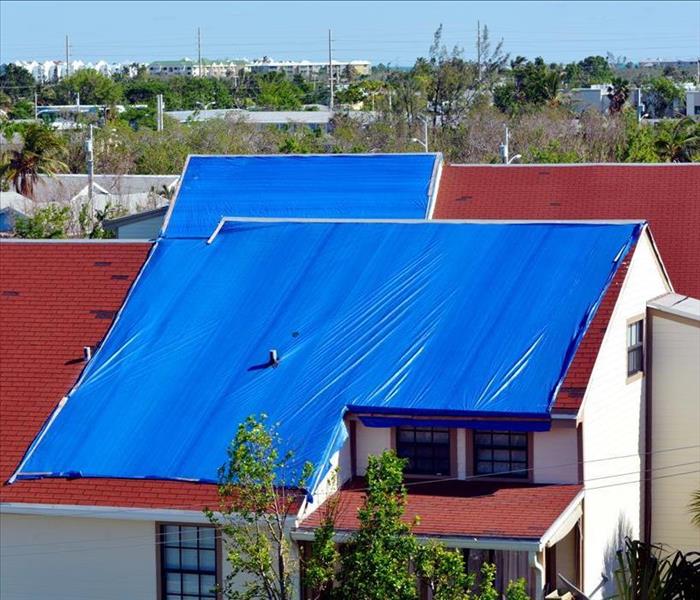 Apply a tarp over your roof after storm damage.
Apply a tarp over your roof after storm damage.
How to Prevent Roof Damage Following a Storm
After a severe storm causes roof damage to your home in Golden Gate, FL, you may need to file a claim with your insurance provider to help pay for repairs. However, your insurer will expect you to take various measures to mitigate your losses before approving your claim.
Apply a Tarp Over Storm Damage
Tarping your roof will prevent water from leaking into your home after hail, snow, rain, or wind lead to:
- Cracks, holes, and detachment of shingles
- Granule layer loss and consequently premature roof decay
- Soffit damage from moisture rotting underlying wood
- Fascia boards damage that compromises your roof's drainage system
An emergency storm repair service can secure a tarp or board up areas where water could enter your home to cause further damage.
Cover Skylights and Their Surrounding Roof Supports
Severe storms can impact your home's skylights. For example, strong winds and hail can crack the glass or compromise the roof flashing around them. You can address hail and wind damage by covering broken skylights with plywood boards or vinyl sheets from a hardware store. Nonporous plastic bags are also helpful if you cannot access other materials.
Inspect Gutters To Avoid Roof Damage
Severe wind can force your home's gutters out of alignment and prevent them from directing water flow away from your roof. In addition, ice blocking the gutters can lead to inadequate roof drainage. As a result, water can freeze in cracks and spaces between roof shingles, causing them to expand and contract as it melts and exacerbating the damage.
Strong winds can also deposit debris in your gutters so they bend and detach under the excessive weight, rendering them ineffective for directing water off your roof. It is essential to contact your insurer as soon as possible for instructions about initiating gutter repair and replacement to mitigate the damage.
A severe storm in Golden Gate, FL, can wreak havoc on your home, but addressing roof damage as soon as possible can help you avoid additional damage and costly repairs.
5 Simple Steps To Conduct a Workplace Fire Drill
4/26/2022 (Permalink)
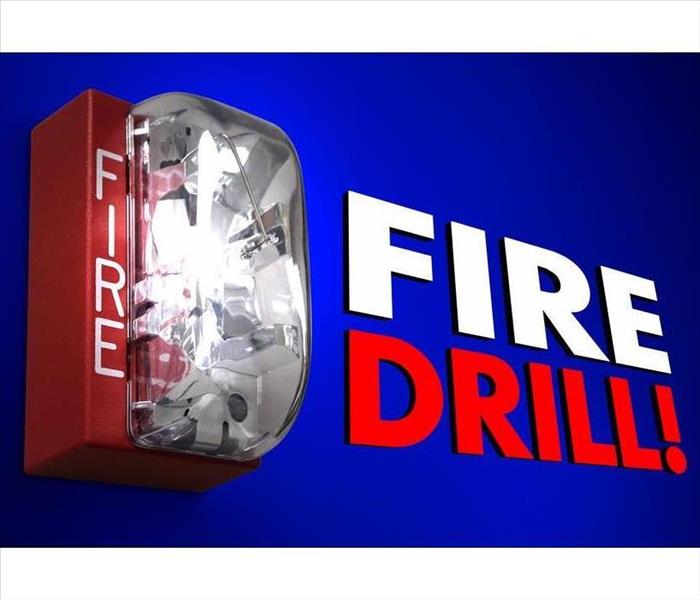 A fire drill is an essential part of your emergency planning.
A fire drill is an essential part of your emergency planning.
How to Run a Workplace Fire Drill
Due to the extreme danger that fires pose in the workplace, most businesses in Esplanade, FL, are required to take reasonable precautions to prepare for an emergency evacuation. This includes having an escape plan, running a fire drill and, in some cases, installing fire sprinklers.
As part of your evacuation plan, fire drills are essential. No matter how good planning is, practicing it at least once will help expose flaws that seemed logical during planning but fail in practice. Here are five steps to build an evacuation plan and run an evacuation drill.
1. Create a READY Profile
Your local storm damage restoration experts offer a no-cost facility assessment and a smartphone app that help you plan for emergencies. You can put all the useful information there to be ready at your fingertips when you really need it. It includes creating an Emergency READY Profile and making sure everything’s lined up with your insurance in case of disaster.
2. Prepare Your Evacuation Plan
This is also the best time to create maps of your inside that layout the best evacuation routes. These should be posted throughout your facility and will show the best escape route from each location. However, the maps should always list all possible escapes since the ideal route may be blocked.
3. Keep Key Employees Informed
Employees will be expected to guide customers and others outside. During a fire drill, they’re going to need to know the way outside by rote, since there’s a tendency to panic in a fire. They should know where the fire extinguishers are and where to assemble evacuees.
4. Announce the Drill
All employees should know well in advance of a planned first drill. Thereafter, it’s probably a good idea to run some without advanced notice. However, they should still know it’s a drill.
5. Conduct the Emergency Evacuation
Everyone should meet outside at the assembly point. Is anyone missing? Did an exit not work? This is your chance to find problems.
A fire drill is an essential part of your emergency planning. Even running a single test will pay dividends during a crisis.
Building Envelopes Eliminate Moisture Problems Due to Rain
1/31/2022 (Permalink)
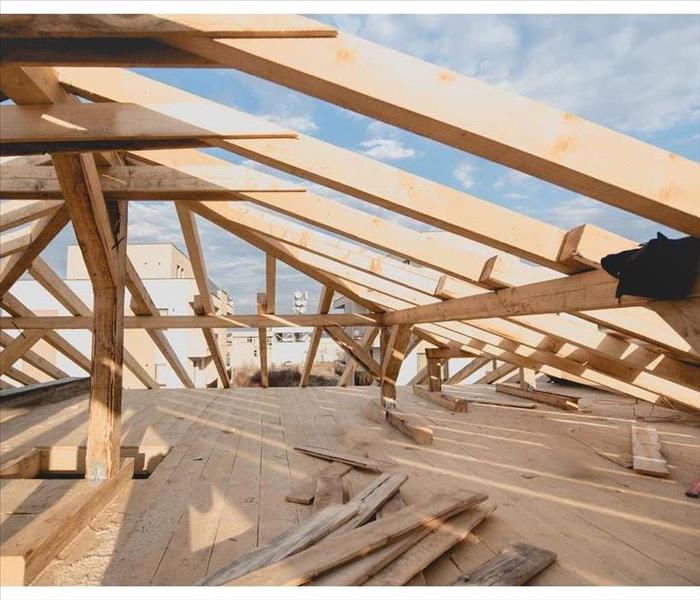 There are many good reasons for implementing building envelopes.
There are many good reasons for implementing building envelopes.
You’ve Never Heard Of a Building Envelope?
Imagine surrounding your entire business space with insulation and a vapor barrier. That’s an envelope. It has several characteristics:
- Insulation surrounds the space and keeps the temperature at the desired level
- A vapor barrier surrounds the space and keeps rainwater out
- Rain damage cannot occur inside the envelope
- Rain cannot cause black mold inside the envelope
- Any area of the structure outside the envelope is susceptible to water damage
Building Envelopes Are Most Effective in New Construction
The concept is most effective when the entire structure is inside the envelope. Retrofitting envelopes to existing structures is a challenge. It is difficult for them to achieve a comparable level of protection against rain. External portions of the retrofitted structure may still be susceptible to rain damage.
A Properly Implemented Envelope Keeps Moisture Levels Low During Storms
Control is important if the business processes demand low levels of humidity. It is also important when circumstances require more moderate levels of moisture. Set the humidity to any level and weather won't affect it.
Remember That Rain Is Not the Only Source of Moisture
Envelopes are an excellent way to limit inside moisture due to rain. However, remember that they will not solve all moisture problems. You have restrooms. You may have kitchen areas and laboratories. You have sprinklers as part of your fire suppression system. Any of these can make a rain-caused moisture problem look trivial. There are many good reasons for implementing building envelopes. Just don’t expect it to be a cure-all for moisture problems.
Your building envelope helped you avoid rain damage, but water never gives up. It always finds a way to cause trouble. When you end up with water damage, the best response is to deal with it immediately. Otherwise, you may encounter that black mold that you hoped to avoid. Skilled water remediation professionals are in the Olde Cypress, FL, area. They are ready to handle your problem and are a phone call away.
 If you need professional help with storm damage restoration in Naples, FL, contact SERVPRO of East Naples today.
If you need professional help with storm damage restoration in Naples, FL, contact SERVPRO of East Naples today.






 24/7 Emergency Service
24/7 Emergency Service






